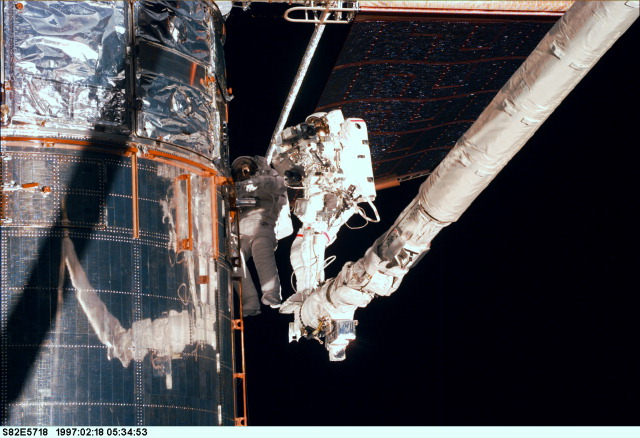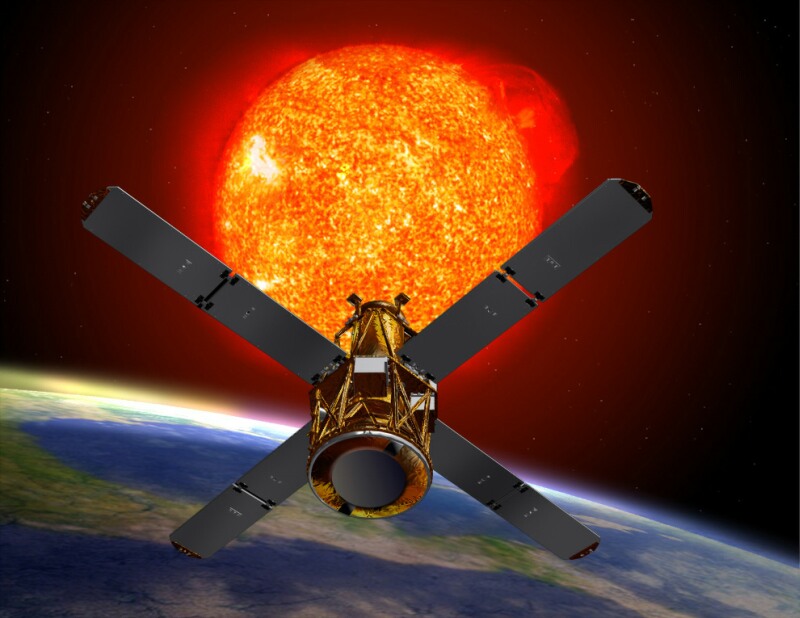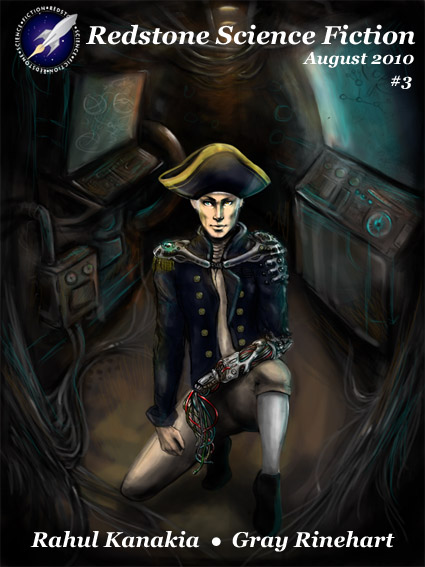A half-century ago today — February 20, 1962 — John H. Glenn became the first U.S. citizen to orbit the Earth when he rode out of Cape Canaveral atop an Atlas rocket.

(Mercury-Atlas-6 launch. NASA image.)
Mission Mercury-Atlas-6 carried Glenn into a 162.2 x 100 mile altitude orbit. He circled the earth three times in the capsule he had named “Friendship-7.”

(John Glenn during the Friendship-7 space flight. NASA image.)
According to this Friendship-7 mission page,
During the flight only two major problems were encountered: (1) a yaw attitude control jet apparently clogged at the end of the first orbit, forcing the astronaut to abandon the automatic control system for the manual-electrical fly-by-wire system; and (2) a faulty switch in the heat shield circuit indicated that the clamp holding the shield had been prematurely released — a signal later found to be false. During reentry, however, the retropack was not jettisoned but retained as a safety measure to hold the heat shield in place in the event it had loosened.
Glenn and Friendship-7 spent almost 5 hours in space on this history-making journey.
















